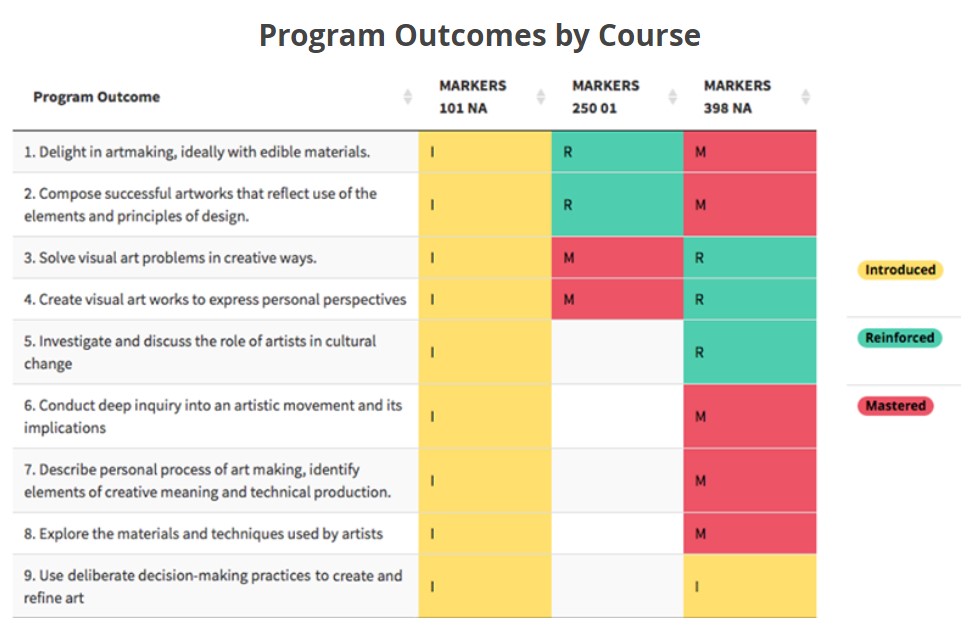Chapter 3 – Step 3 in the Process
Curriculum Mapping
Curriculum mapping is the term for collecting and presenting data at the program level.
The name is misleading – it won’t look like a road map. Data can appear in many formats such as spreadsheets, graphs, or series of tables.
Mapping will show the alignment and progression of course-level outcomes within program-level outcomes.
The map does not provide analysis, but equips faculty to undertake it. Designing the process for your program needs is essential.
Curriculum maps help make informed decisions about program-level change initiatives. This can be part of a program review such as accreditation or part of continuous improvement.
It is possible to map many attributes, so it is important to refine what is most useful. Some examples might be:
- learning outcomes (knowledge, skills, values),
- student competencies,
- teaching and learning activities,
- assessment practices,
- wellness strategies,
- USask priority areas such as indigenization, internationalization, Open Educational Practices, or sustainability
“The goal of curriculum mapping and review is not to have a beautiful map, though sometimes instructors and program leads want to have a perfect map. Occasionally groups want to debate the validity of the data or dismiss what they are seeing if they do not have confidence in the process. Where appropriate, emphasize that the goal is to have meaningful discussions about the current curriculum, and identify strengths and potential changes.” – DiPietro, C. et al. (2022), p. 79
Mapping provides information in different forms, such as the table below, pie charts, and dot plots.

Process Tips for the Mapping Process ✔
Think of the process like developing a focused research question.
Create a clear purpose for the mapping process such as:
- What do you need to know? To what degree and depth?
- How will the data be used, by whom?
- What will a gap in program level outcomes tell us?
- How will we address the results of mapping?
Next, determine the best method for collecting data, such as:
- All faculty meeting
- Syllabus review by a small group
- One-to-one consults
And there are limitations to any method; acknowledge these.
USask Resources
Reach out to gmctl@usask.ca for help making decisions about mapping and help asking questions such as:
- What would you define as ‘taught’ by the instructor or as ‘learned’ by the student (intended, implemented, experienced, assessed, and hidden curricula)?
- What is evidence of student competency?
- What makes a map reliable?
Consider using the customizable Curriculum Alignment Tool supported by GMCTL.
Reference
DiPietro, C., Dyjur, P., Fitzpatrick, K., Grant, K., Hoessler, C., Kalu, F., Richards, J., Skene, A., & Wolf, P. (2022) Educational Development Guide Series: No. 4. A Comprehensive Guide to Working with Higher Education Curriculum Development, Review & Renewal Projects (P. Dyjur & A. Skene, Eds). Educational Developers Caucus. https://forms.gle/PSr5z6nRbAnvB1Ju6

